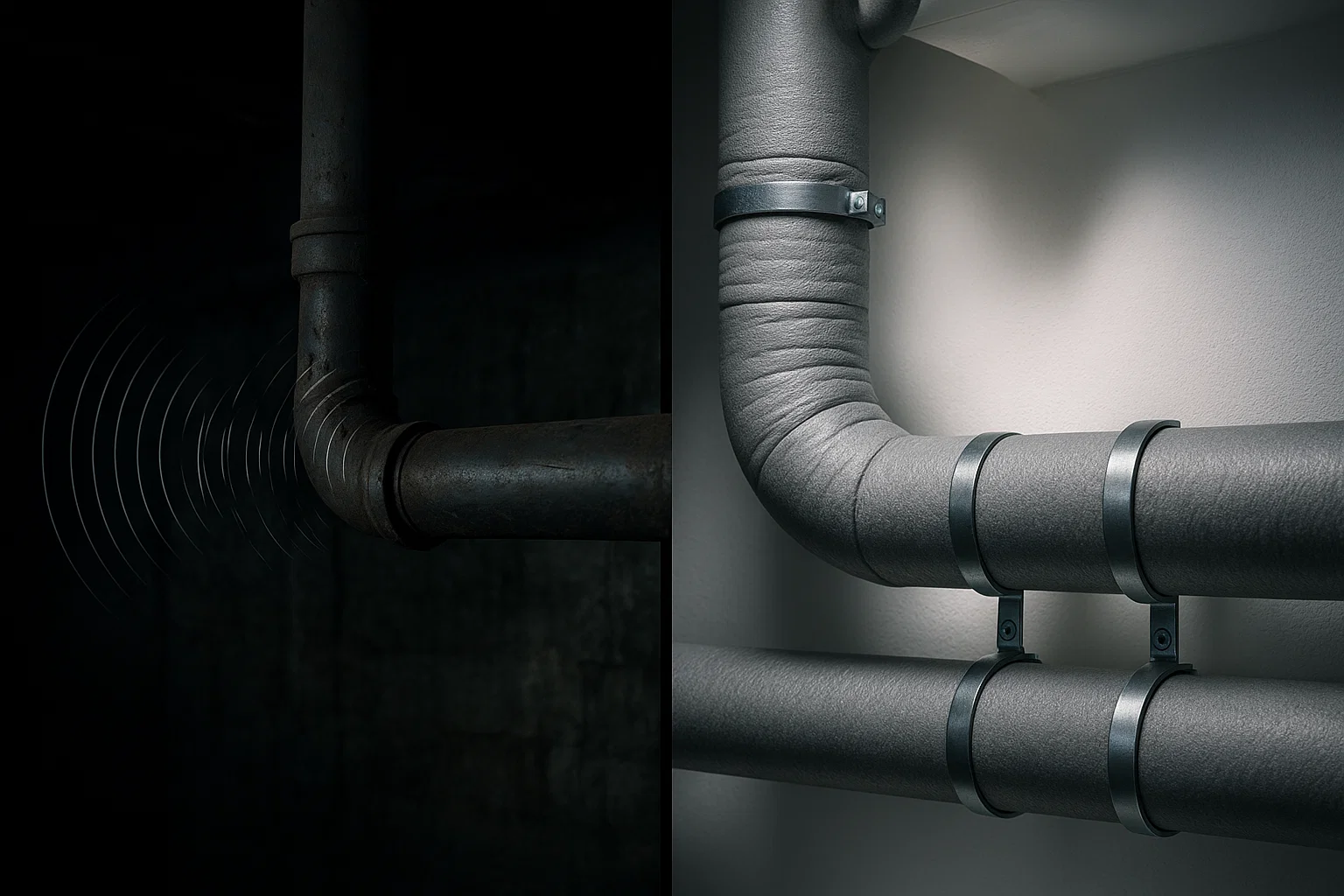
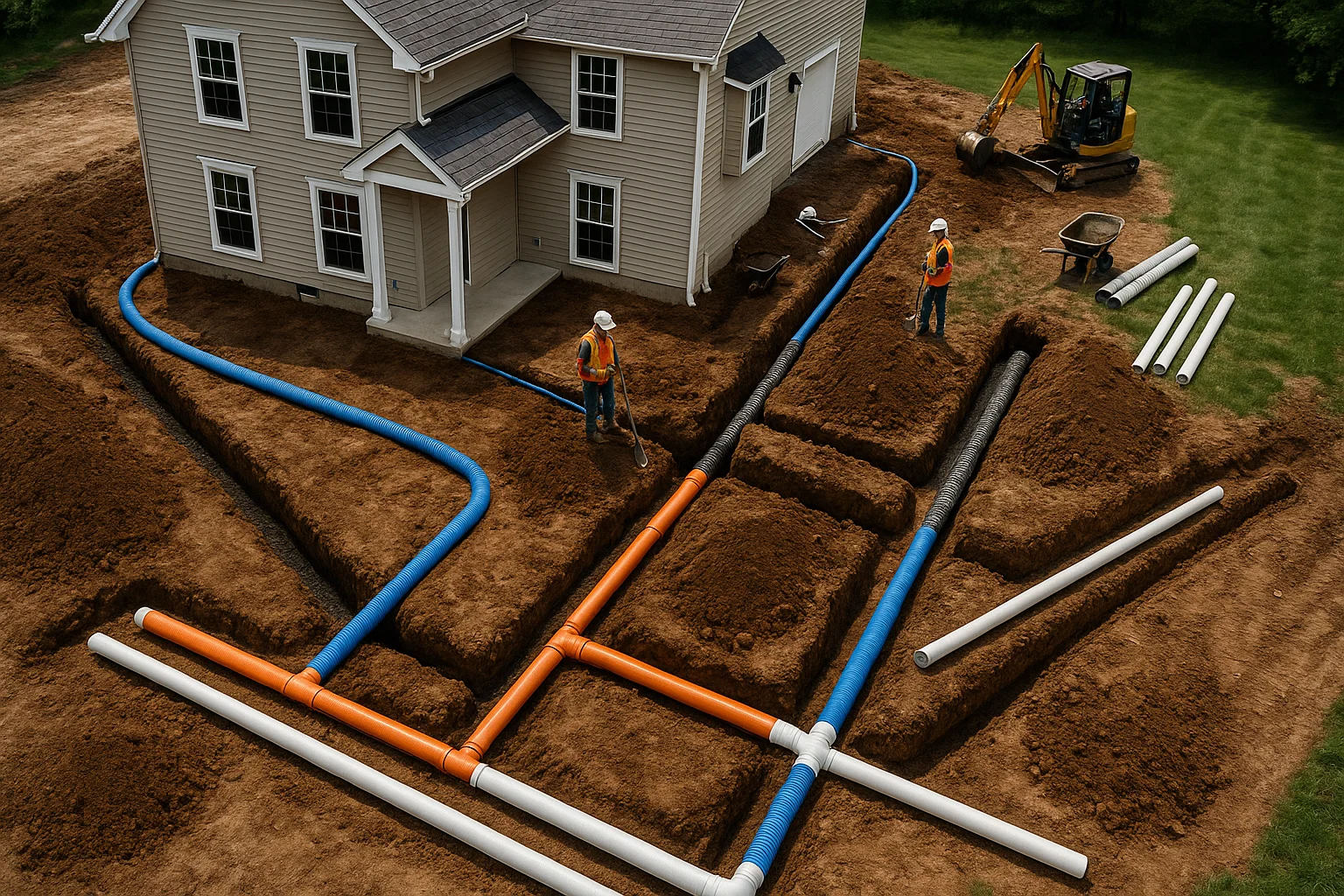
Managing excess water effectively is a critical challenge for property owners and construction professionals alike. Poor drainage can lead to devastating consequences – from structural damage and mold growth to landscape erosion and flooding. The foundation of any effective drainage system lies in selecting the right type of pipe. With numerous materials, sizes, and specifications available, choosing what is the best pipe to use for underground drainage can be overwhelming. This comprehensive guide will explore the various types of drainage pipes, their unique properties, and optimal applications to help you make informed decisions for your water management needs.

Drainage systems serve as the unsung heroes of infrastructure, silently redirecting water away from areas where it could cause damage. These systems are integral to both residential and commercial properties, playing a crucial role in:
The effectiveness of a drainage system largely depends on the type of pipes used. Different materials offer varying levels of durability, resistance to chemicals, load-bearing capacity, and cost-effectiveness.
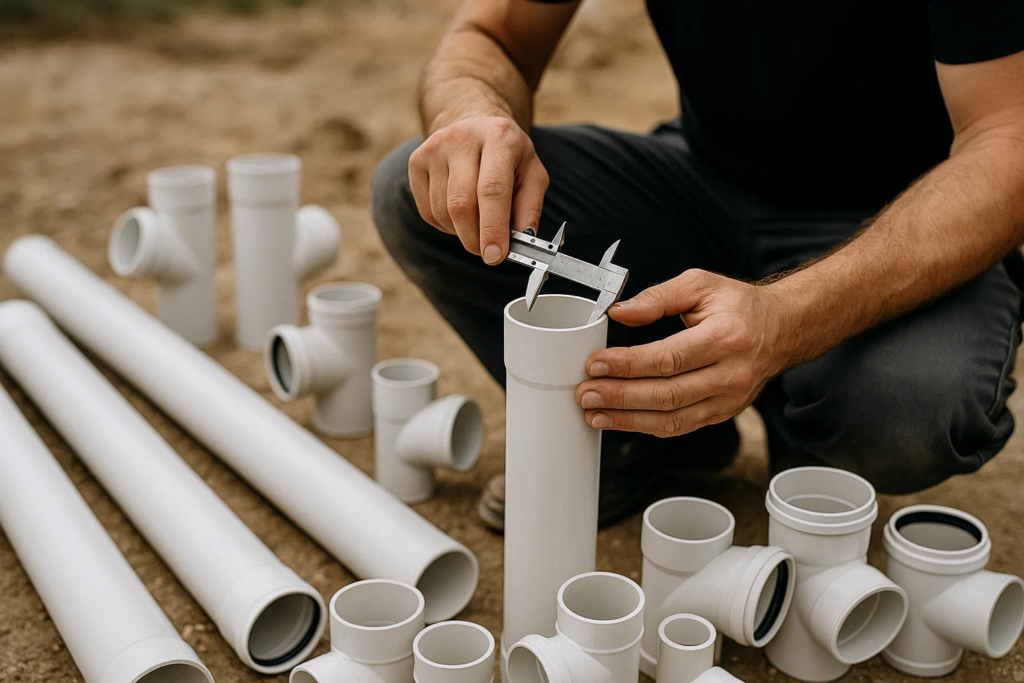
Polyvinyl Chloride (PVC) pipes have revolutionized the drainage industry with their versatility and reliability. These lightweight yet robust pipes are among the most popular choices for modern drainage systems.
PVC pipes come in different pressure ratings, with high-pressure PVC valves being essential for applications where water is under significant pressure. For typical drainage systems, standard PVC pipes are sufficient. If you’re looking to connect these pipes, it’s important to check PVC pipe quality before installation to ensure optimal performance.
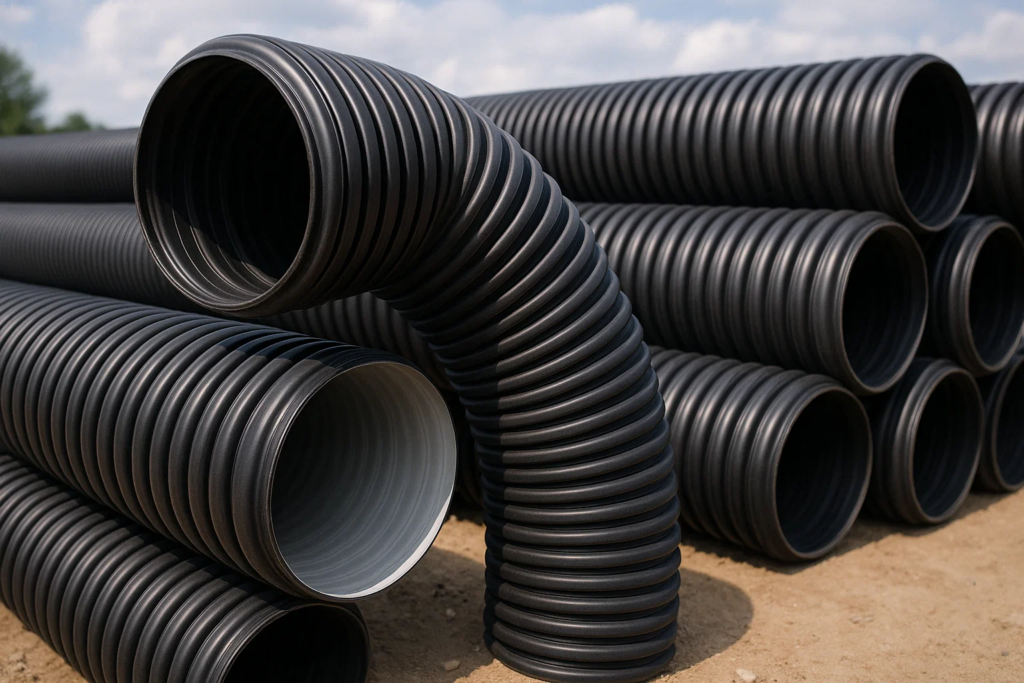
High-Density Polyethylene (HDPE) pipes have gained significant traction in drainage applications due to their exceptional flexibility and strength.
HDPE large diameter pipes are particularly valuable for commercial and industrial applications where substantial water flow must be managed. These pipes undergo rigorous testing methods to ensure they meet stringent quality standards.
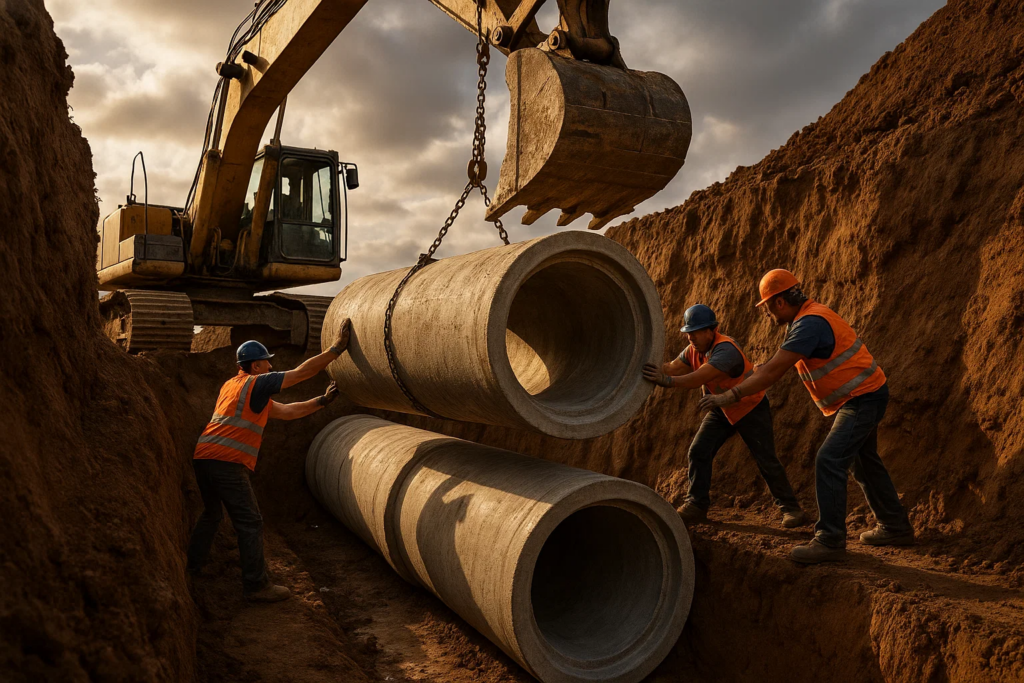
When durability and load-bearing capacity are paramount, concrete drainage pipes often become the material of choice.
The substantial weight of concrete pipes makes installation more challenging, typically requiring heavy machinery. However, this same characteristic provides excellent stability in applications where pipe movement would be problematic.
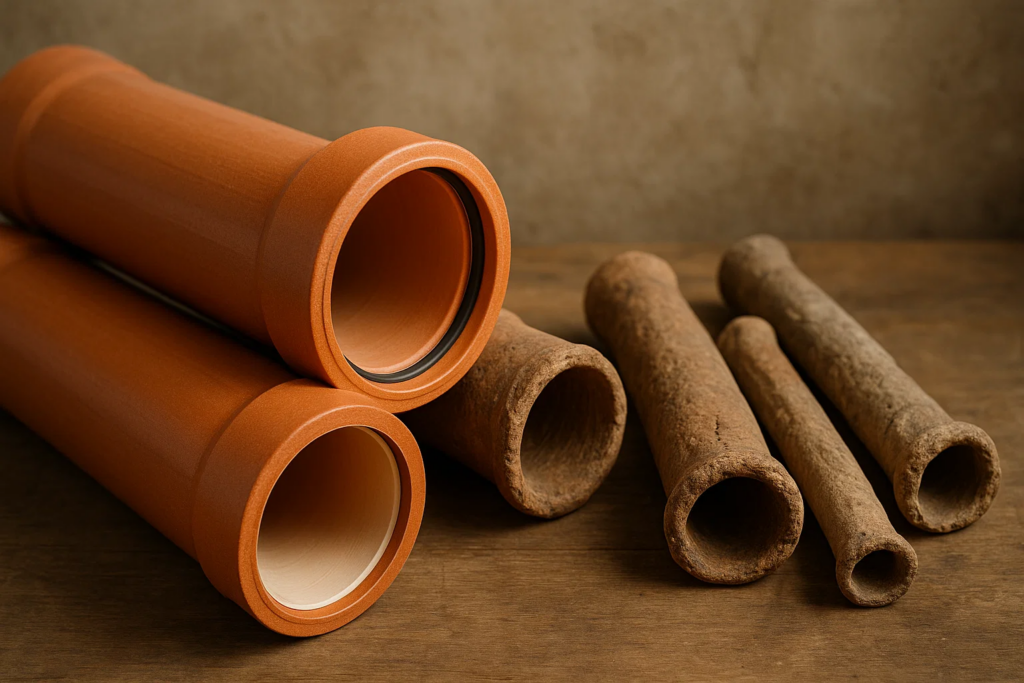
Clay pipes represent one of the oldest drainage solutions, with a proven track record spanning centuries.
While less common in new construction due to their brittleness and higher cost compared to modern alternatives, clay pipes remain valuable in specific applications where their unique properties are advantageous.
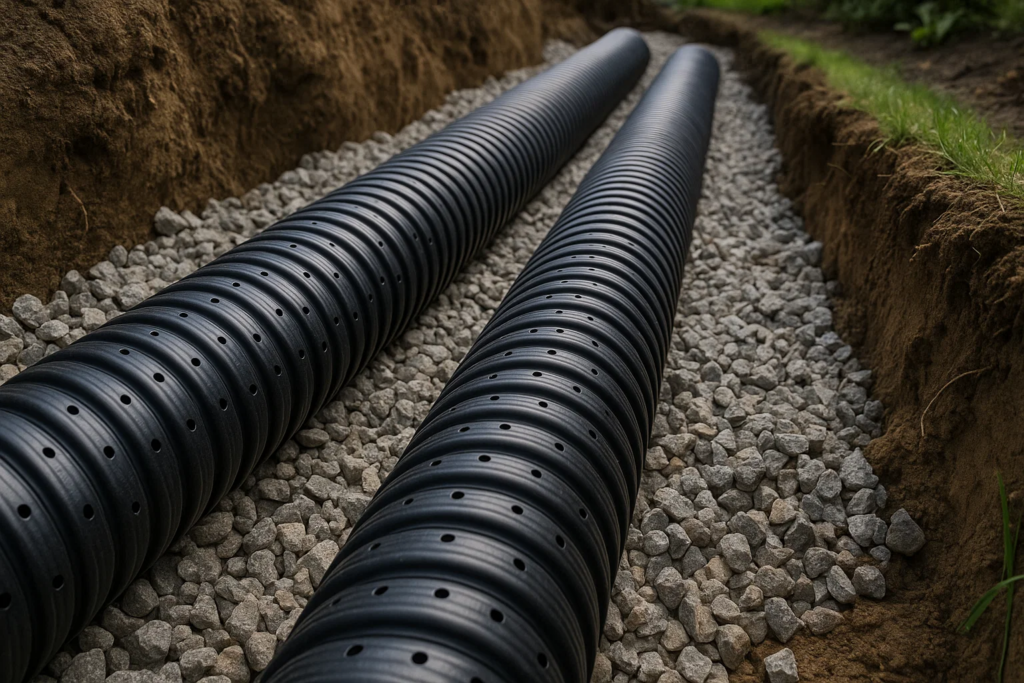
Recognizable by their ribbed, wavy exterior, corrugated drainage pipes offer an excellent balance of strength and flexibility.
Corrugated pipes are often made from HDPE or polypropylene, combining the benefits of plastic materials with enhanced structural strength from the corrugated design. When these pipes develop issues, it’s important to know how to find broken pipes underground for timely repairs.
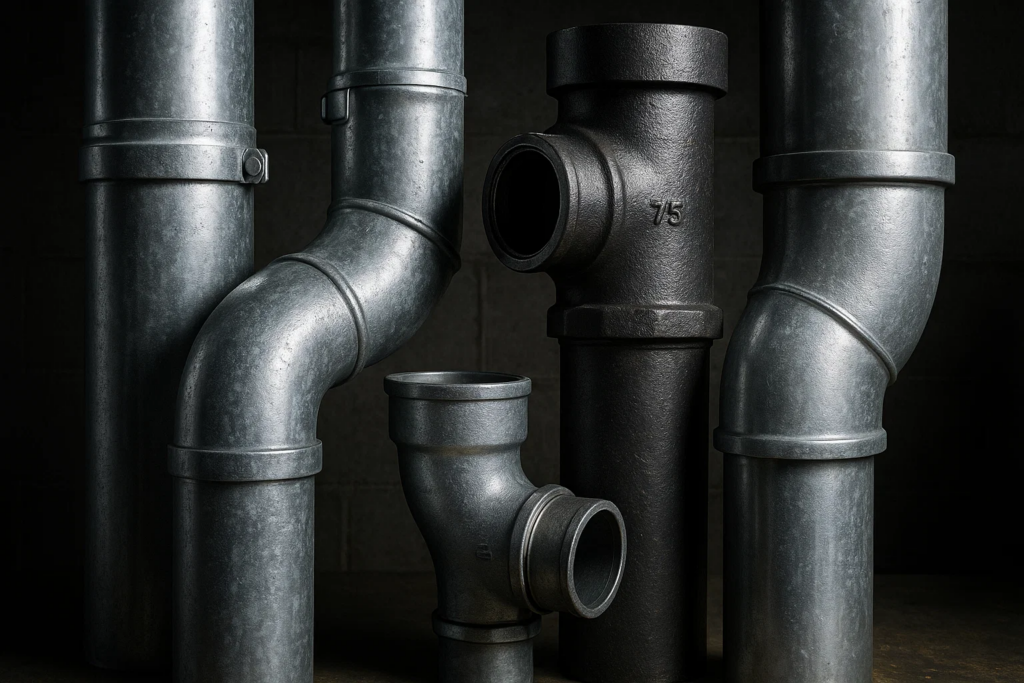
Metal drainage pipes, typically made from galvanized steel, aluminum, or cast iron, serve specific roles in drainage systems.
When choosing between plastic and metal options, consider the specific requirements of your project. In many cases, PVC valves offer advantages over metal valves in terms of corrosion resistance and maintenance needs.
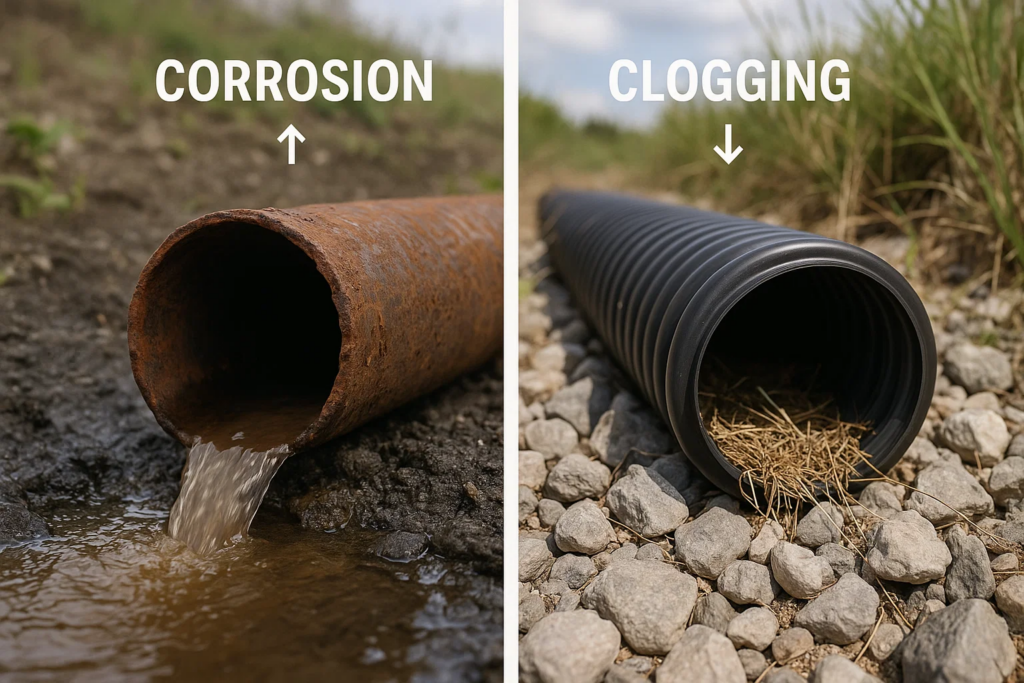
Determining what is the best pipe to use for underground drainage requires careful consideration of several factors:
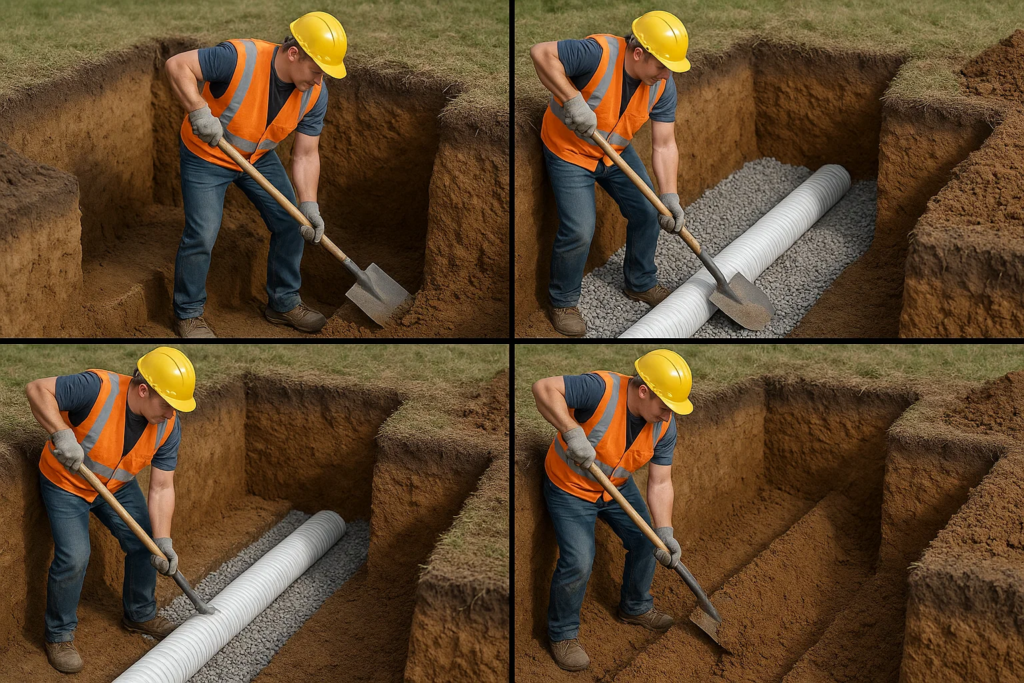
Proper installation is crucial for ensuring the longevity and effectiveness of drainage systems:
For specific installation guidance, particularly for specialized systems like PPR pipes, following manufacturer recommendations is essential.
Even the best drainage systems require periodic maintenance to function optimally:
For most residential underground drainage applications, PVC and corrugated HDPE pipes are excellent choices. PVC offers superior durability and smooth water flow, while corrugated HDPE provides flexibility for ground movement and cost-effectiveness. For heavy-load applications like driveway culverts, concrete or heavy-duty HDPE pipes are recommended.
Drainage pipe lifespan varies by material: PVC can last 50-100 years, HDPE 50-75 years, concrete over 100 years, clay 50-200+ years, and metal pipes 20-50 years depending on corrosion protection. Proper installation and soil conditions significantly impact longevity.
Pipe sizing depends on water volume, catchment area, and rainfall intensity. For typical residential applications, 4-inch pipes handle most yard drainage, while 6-inch pipes are common for driveway culverts. Larger properties or areas with substantial water flow may require 8-inch or larger pipes.
Yes, drainage pipes typically require a slope of 1-2% (⅛ to ¼ inch drop per foot) to ensure proper water flow. Inadequate slope can lead to standing water and blockages, while excessive slope may cause erosion and pipe separation.
Burial depth depends on local frost lines, surface loads, and pipe material. In most regions, a minimum depth of 12-18 inches is recommended for yard drainage, while pipes under driveways should be at least 18-24 inches deep. Areas with deep frost penetration may require greater depths.
Yes, different pipe types can be connected using appropriate transition fittings designed specifically for joining dissimilar materials. These specialized connectors accommodate differences in outside diameter and provide watertight seals between different pipe materials.
Signs of clogged drainage pipes include water backing up in fixtures, slow drainage, gurgling sounds, water pooling around drain areas, foul odors, and unexplained wet spots in the yard. For subsurface drainage, water pooling in areas that previously drained well indicates potential clogs.
Perforated pipes are better for collecting water from surrounding soil (as in French drains or agricultural drainage), while solid pipes are superior for transporting water from one location to another. The choice depends on whether you need to collect or convey water.
Regular maintenance includes removing debris from inlets, flushing pipes annually to remove sediment, inspecting for damage or root intrusion, and ensuring catch basins remain clear. Professional inspection every 3-5 years is recommended for main drainage lines.
Yes, drainage pipes can freeze if water remains standing in them during freezing temperatures. Proper sloping, insulation in shallow installations, and ensuring complete drainage can minimize freezing risks. In severe climates, heating cables may be necessary for critical drainage components.
Selecting the appropriate drainage pipe is crucial for creating effective, long-lasting water management systems. By understanding the unique properties and applications of various pipe materials—from versatile PVC to durable concrete and flexible HDPE—you can make informed decisions that protect your property from water damage for decades to come.
Remember that proper installation is just as important as material selection. Even the highest quality pipes will fail prematurely if improperly installed. For complex drainage challenges or large-scale projects, consulting with drainage professionals or engineers is highly recommended.
Effective water management is an investment in your property’s longevity and value. By implementing the right drainage solutions with appropriate materials, you’ll prevent costly water damage and create a drier, healthier environment for years to come.
For professional drainage solutions and high-quality drainage pipes in Dubai, visit Dave Pools’ drainage pipes supply services or explore our comprehensive water management solutions.